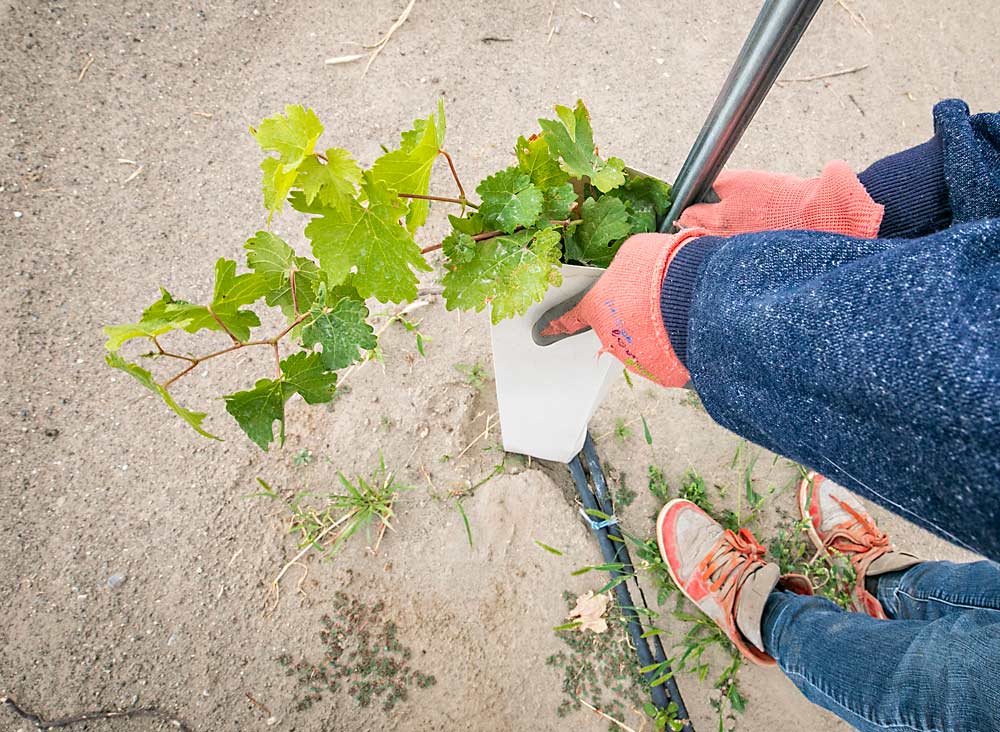
When Washington growers go to replant vineyards, many may consider planting grafted vines for the first time, to reduce the pressure from plant parasitic nematodes that have built up over the years, or recently discovered phylloxera.
But ordering grafted vines requires more lead time than many grape growers are used to. Ordering own-rooted vines, growers were often able to order in March and plant later in the same spring, an advantage that allowed the industry to quickly expand acreage in response to growing demand, said Michelle Moyer, Washington State University Extension viticulturist.
“We were able to plant 10,000 acres over five years because we were own-rooted,” she said.
Now that the industry faces oversupply, the pace of planting has slowed significantly. When it resumes, growers should prepare to plan their orders more than a year in advance. Between rootstocks and the trend toward unique varieties, nursery production has become a lot more complex.
“It limits our ability to speculate like we used to,” said Kevin Judkins, owner of Inland Desert Nursery, the largest grapevine provider in Washington, based in Benton City. “The days of looking at our list for 2020 and getting 50 acres of plant material ready, that’s just gone.”
Inland Desert has plenty of experience grafting, he said at the session on vineyard renovation at the Washington Winegrowers Association’s annual meeting in March. The company started producing grafted vines seven years ago, to serve customers in the Eastern U.S. and Canada. “Washington has a really great environment for clean plants,” Judkins said in a subsequent interview. “But no one wanted our clean plants outside Washington, unless they were grafted.”
Out of 14 rootstocks in its catalogue, Inland Desert has six to eight mainstays that are proven all over the world, even if they are unfamiliar to the Washington market, he said. “What’s reassuring to me is that there’s enough planted out there to know that they aren’t duds,” he said. “Is there some dialing in that needs to happen? Sure. We can really dial in rootstocks for your production goals and your site.”
That’s going to be a learning curve, he said, but since the pace of planting has slowed, there’s time to learn.
“Now that there is an oversupply, wineries will only be working with the best fruit,” Judkins said. “It’s a real opportunity to address those blocks that are underperforming due to leafroll or nematodes or phylloxera and do some renewing.”
It remains to be seen how much Washington growers will embrace rootstocks, which also makes it challenging for nursery providers to know how much to invest in rootstock mother blocks. Meanwhile, Inland Desert plans to transition over its own mother blocks to grafted vines to safeguard the availability of clean budwood against phylloxera, too, he added. •
—by Kate Prengaman
Related:
—How to do your do-over






Leave A Comment